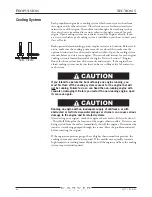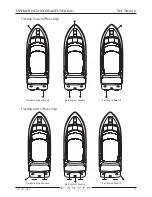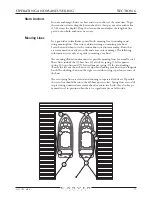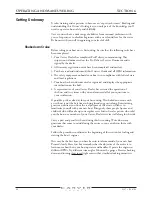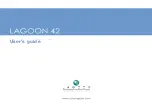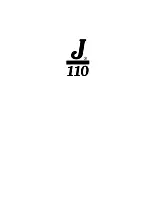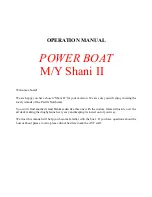
3327 • P2 6/06
69
PROPULSION
SECTION 5
The gauges can be affected by static electricity that may build up on their
glass bezels. To help reduce the static electricity and thus improve the
gauges’ accuracy, periodically wash the bezels with warm water and a mild
liquid detergent.
Helm Controls
The helm controls allow you to engage the boat’s engines, control the
boat’s speed and engine RPMs, and control the direction in which the
boat is traveling.
Shift/Throttle Levers
Two shift/throttle levers allow you to both shift the engines from neutral to
forward or reverse and control the engine RPMs. With the levers in the center
position, the engines remain in neutral at their lowest RPM levels. Lifting the
levers above the neutral position shifts the engines to forward and increases the
RPM levels. Lowering the levers below the neutral position shifts the engines to
reverse and increases the RPM levels.
The shift/throttle levers are located on the starboard side of the steering wheel.
The outboard lever controls the starboard engine and the inboard lever controls
the port engine. The engines can be shifted/throttled independently to improve
maneuverability in tight quarters.
Because your boat has dual engines, it is recommended that you operate
the engines at the same speed while cruising. This reduces engine noise and
vibration, and improves engine efficiency.
Use the tachometers to monitor the speed of each engine. Adjust the shift/
throttle levers so that the tachometers display the same RPM reading.
NOTE:
Aligning the shift/throttle levers with each other does not necessarily
mean the engines are synchronized. To accurately synchronize the engines, rely
on the tachometers.
Control Cables
Push-pull cables are used to connect the shift/throttle levers to the engines. Refer
to the OEM information for details on adjusting and maintaining the shift and
throttle control systems.
Steering
Your boat uses a hydraulic steering system. This system is preferable over a
mechanical steering system because it provides better response for large boats.
The boat’s helm is connected to the rudders through a hydraulic pump, a
network of hydraulic lines, an oil reservoir, a hydraulic cylinder, and a tiller tie
rod. When the helm is turned, oil pumps through the hydraulic line, which
activates the hydraulic cylinder. The cylinder is connected to the tiller tie rod.
Extending and retracting the cylinder moves the rudders, enabling you to steer
the boat. With hydraulic steering, the effort needed to turn the helm remains
the same regardless of the boat’s speed.
For the hydraulic steering system to operate properly, it must have an adequate
supply of hydraulic fluid and sufficient pressure within the hydraulic pump and
lines. Refer to the OEM information for details on operating and maintaining
the steering system.
Summary of Contents for 380 SPORT
Page 1: ...HIN CDR _________________ 380 Sport Owner s Guide 2007 Version 1 ...
Page 2: ......
Page 4: ......
Page 6: ......
Page 8: ......
Page 28: ......
Page 40: ...28 3327 P2 6 06 DC ELECTRICAL SYSTEM SECTION 2 DC SCHEMATIC 3327 324 002 5 12 7 05 ...
Page 54: ...42 3327 P2 6 06 AC ELECTRICAL SYSTEMS SECTION 3 AC SCHEMATIC 3327 300 015 2 9 04 ...
Page 108: ......
Page 122: ......
Page 124: ...112 3327 P2 6 06 WARRANTY AND PARTS SECTION 9 Hatches ...
Page 129: ...3327 P2 6 06 117 WARRANTY AND PARTS SECTION 9 Bill of Material ...
Page 130: ......
Page 131: ...3327 P2 6 06 119 WARRANTY AND PARTS SECTION 9 Carver Limited Warranty ...










